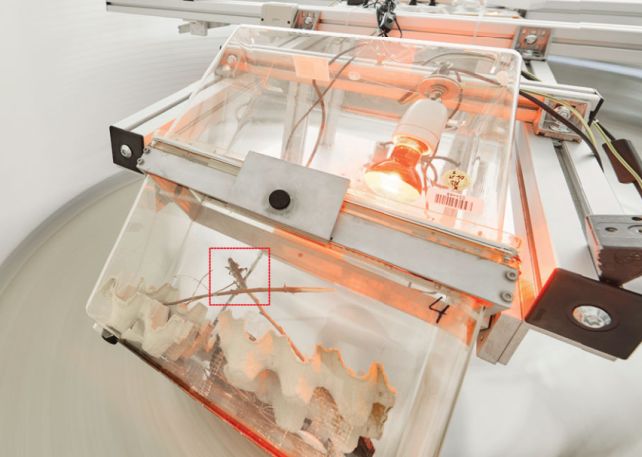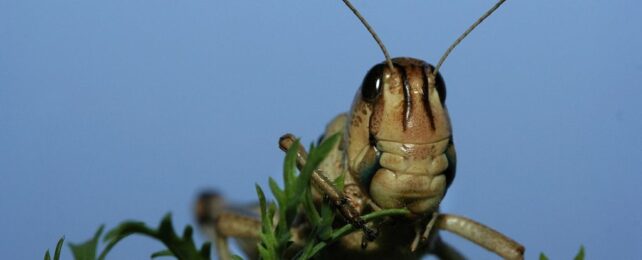EMBARGO Wednesday 6 December 1101 AEDT
It takes locusts shockingly little time to adjust to a change in gravity conditions.
Scientists put a whole bunch of the insects in a device that simulates extra gravity, and observed that their exoskeletons and legs got stronger in just a few short weeks.
Only up to a point, though: with too much extra pressure applied, the locusts grew weaker, and died in increasing numbers as greater simulated gravity was applied.
Nevertheless, the research shows the way that insect exoskeletons can adapt to different conditions, and provides information that we may be able to use in the development of biomaterials.
We know that, when we alter gravity, a physical system can change in response.
Mammals in the microgravity environment of the International Space Station lose bone and muscle density.
Plants respond readily to changes in gravity, whether stronger or weaker.
But most of the animals on Earth – some 80 percent – have a cuticle exoskeleton. These are the arthropods, both marine and terrestrial, and the way their hard shells react to the mechanical stress of high gravity is, according to biologists Karen Stamm and Jan-Henning Dirks of Bremen University of Applied Sciences, a region that has been surprisingly under-explored.
So, they set about rectifying this hole in our knowledge, with a special device developed just for studying insects in high gravity.
That device is a custom-designed centrifuge. As it spins, centrifugal force acts on anything that's placed within, putting on additional pressure not dissimilar to the effect of gravity.
The researchers were able to fine-tune their centrifuge to produce specific gravitational conditions. The normal acceleration due to Earth's gravity at sea level is denoted 1g. The researchers were able to multiply this all the way up to 8g.
The next step was to see what effect this would have on insects.
The researchers acquired nearly-adult locusts of the species Locusta migratoria, and placed them in the centrifuge following their final molt – when they shuck one exoskeleton and emerge with their shiny new soft adult one that develops and hardens over time.

Each group of locusts was placed in the centrifuge for two weeks while their exoskeleton hardened.
There were three groups, at 3g, 5g, and 8g, as well as a 1g control group against which the researchers could compare their hypergravity locusts.
The centrifuge was continuous – it only stopped once every 3 days, for a maximum of 15 minutes at a time, for caretaking purposes.
The rate at which the locusts died was pretty interesting. For the 1g control group, the survival rate was 76 percent.
That rate rose slightly for the 3g group: 81 percent of the locusts made it.
But then the survival rate sharply fell: only 51 percent of the 5g group survived the two weeks, and a measly 7 percent of 8g locusts made it through.
The effect on the thickness of the insects' exoskeleton and the strength of their legs seemed to match this trend pretty neatly.
At 3g, the insects had significantly stronger legs than those at 1g. But at 5g and 8g, the thickness of the cuticle decreased. And, in addition, the 8g locusts lose body mass. It doesn't sound like it was a very good time for them at all.
But the results show, for the first time, how insects can adapt and alter their bodies to a higher mechanical load.
This has implications for the development of biomaterials, but also for our understanding of the evolution of life itself, in all its glorious forms.
"Our results do show that locusts subject to hypergravity seem to be able to deposit cuticle with different mechanical properties during their ontogenesis," the researchers write.
"This indicates that the ability of a biological material to adapt to mechanical load, previously only known for endoskeletons and higher plants, apparently is also present in insects and maybe even all arthropods. This ability thus might be a fundamental concept of almost all skeletal forms and – taking into account the diverse evolutionary pathways of exo- and endoskeletons and plants – could be a widely distributed convergent evolutionary trait of all load bearing skeletal biomaterials."
The research has been published in Proceedings of the Royal Society B: Biological Sciences.
